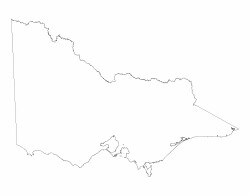3.3.3 Basaltic residuals (Phillip Island)
3. Southern Uplands (SU)
3.3 Very low relief (very low elevation, generally less than 100 m)
| The southern part of the Mornington Peninsula and Phillip Island is mostly comprised of Older basalt (Palaeogene), with late Neogene alluvium in the drainage lines. The landform generally comprises low rounded crests with broadly spaced flats and depressions. On Phillip Island, the flats may be quite extensive – up to 1 km across. The low-lying areas are generally affected by salinity, probably caused by vegetation clearing and proximity to the sea. There are few friable red gradational soils on these low residuals, most soils are mottled yellow and brown texture contrast soils, often sodic (Chromosols and Sodosols) and similarly coloured gradational soils (Dermosols). The soils of the broad drainage lines are seasonally waterlogged and comprise grey clays (Vertosols) or grey gradational soils (Dermosols, Hydrosols). On Phillip Island there are two main areas of late Neogene sands (see 8.4 and 8.5), one connecting the main part of the island to Cape Woolamai (see 3.2.1), the other on the northern part of the Island between Cowes and Rhyll.
|  |
On Phillip Island there are two main areas of late Neogene sands (see 8.4 and 8.5), one connecting the main part of the island to Cape Woolamai (see 3.2.1), the other on the northern part of the Island between Cowes and Rhyll.


